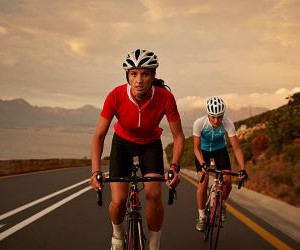Learn how to deal with punctures on long rides with prevention tips, repair techniques, and smart gear choices to keep rolling without stress.
WHAT ARE THE MOST COMMON CYCLING MISTAKES BEGINNERS MAKE?
New cyclists often dive into the sport full of enthusiasm, but small mistakes can lead to discomfort, wasted effort, or even injury. This guide outlines the most frequent beginner cycling errors—like poor bike fit, neglecting nutrition, and training too hard too soon—while offering practical solutions to avoid them. Whether you're riding for fitness, commuting, or adventure, these expert-backed tips will help you ride smarter, stay motivated, and enjoy every mile on the bike.

Ignoring bike fit and setup
One of the most common and costly mistakes beginners make is riding a poorly fitted bike. An incorrect setup can lead to knee pain, backaches, hand numbness, and general discomfort, turning a fun activity into a painful experience.
Why bike fit matters
A properly fitted bike optimizes power output, improves comfort, and prevents injury. This means correct saddle height, handlebar position, and frame size—not just adjusting seat height randomly before a ride. Many beginners underestimate how small tweaks can transform their ride experience.
Start with the right frame size for your height
Adjust saddle height to maintain a slight knee bend at full extension
Ensure handlebars allow for a neutral spine and relaxed shoulders
Use a bike fit calculator or visit a professional fitter
Double-check cleat alignment if using clipless pedals
Bike fit is not a luxury—it's a foundation. Investing early in a fit, even a basic one, saves hours of frustration and speeds up your progress on the saddle.
Overtraining and skipping recovery
New cyclists often fall into the trap of riding too hard, too often. Inspired by YouTube pros or Strava segments, beginners may mimic training loads that far exceed their current fitness levels. The result? Burnout, fatigue, or worse—injury.
Less is more for new riders
When starting out, consistency matters more than intensity. Recovery is when your body rebuilds and adapts to stress. Without rest, your performance plateaus, motivation dips, and your immune system weakens.
Every solid training plan includes deliberate recovery. Alternate hard and easy days, and schedule full rest days every week. If you're always tired or dreading rides, you're likely overtraining—even if your mileage seems modest.
Start with 2–3 rides per week and build slowly
Use recovery rides to flush out fatigue
Incorporate cross-training like swimming or yoga
Track fatigue signals like poor sleep or irritability
Don’t fear rest days—they make you faster
More isn't always better. Progress comes from the right dose of work, paired with strategic downtime. Listen to your body, not your ego.
Neglecting nutrition and hydration
Cycling burns serious calories, especially on longer rides or hilly terrain. Many beginners hit the wall—aka bonk—because they don’t fuel properly before, during, or after their rides. Staying hydrated and energized is critical to performance and enjoyment.
Fuel before you fail
Eating the right foods at the right times enhances endurance and recovery. You don’t need complicated supplements or exotic gels—just a simple, consistent nutrition plan. Hydration matters just as much; even slight dehydration can impair performance and concentration.
Start every ride well-fed and hydrated. Bring snacks on rides over an hour. Afterward, refuel with a mix of carbs and protein to help muscles recover and rebuild.
Eat a light meal 1–2 hours before your ride
Drink water consistently—not just when you're thirsty
Bring bananas, bars, or trail mix for rides over 60 minutes
Use electrolyte drinks on hot or long rides
Refuel within 30 minutes post-ride
Nutrition doesn't have to be complicated, but it must be intentional. The right fuel helps you ride longer, recover faster, and stay healthy as your training builds.
YOU MAY ALSO BE INTERESTED






